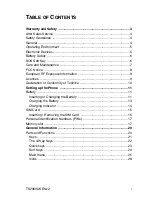
41-001343-01 Rev 02, Release 3.2.2
8-7
Using the Auto-Resync Feature
The auto-resync feature on the IP phones allows an administrator to enable the phone to be
updated automatically once a day at a specific time in a 24-hour period if the files on the server
have changed. This feature works with TFTP, FTP, HTTP, and HTTPS servers. An administrator
can enable this feature using the Aastra Web UI or using the configuration files (aastra.cfg,
<model>.cfg, and <mac>.cfg).
An Administrator can enable Auto-Resync using the configuration files or the Aastra Web UI. In
the configuration files you set the following parameters:
•
auto resync mode -
Determines whether the configuration server automatically updates the
phone’s configuration files only, the firmware only, both the firmware and configuration files,
or disables automatic updates. This parameter works with TFTP, FTP, HTTP, and HTTPS
servers.
•
auto resync time -
Sets the time of day in a 24-hour period for the IP phone to be
automatically updated. This parameter works with TFTP, FTP, HTTP and HTTPS servers.
•
auto resync max delay -
Specifies the maximum time, in minutes, the phone waits past the
scheduled time before starting a checksync.
•
auto resync days -
Specifies the amount of days that the phone waits between checksync
operations.
In the Aastra Web UI, you can set the following parameters at the path
Advanced
Settings->Configuration Server->Auto-Resync
:
•
Mode
•
Time (24 hours)
•
Maximum Delay
•
Days
Setting the “
auto resync max delay
” (Maximum Delay) and “auto resync days” (Days)
parameters can greatly reduce the load placed on the configuration server when downloading
configurations.
Enabling Auto-Resync Using the Configuration Files
Use the following procedure to configure automatic updates of the IP phone firmware,
configuration files, or both.
Note:
The automatic update feature works with both encrypted and plain
text configuration files.
Configuration Files
For specific parameters you can set in the configuration files for automatic update, see Appendix A, the
section,
“Configuration Server Settings”
on
page A-19.
















































